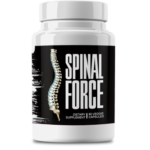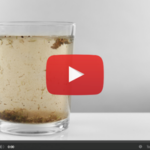This Village-Made Chinese Pain Reliever Eliminates Back And Joint Pain!
Is Aching Joints Menopause Related? Find Out Now!

Aching Joints and Menopause: What’s the Connection?
Introduction: Why Your Joints Might Be Complaining
If you're in your 40s or 50s and suddenly noticing new aches in your knees, hips, or hands, you're not imagining things. That nagging joint pain might just be another gift from menopause. While hot flashes and mood swings get all the attention, joint discomfort can be just as frustrating. The good news? Understanding why it happens is the first step to finding relief. Let’s break it down together.
The Estrogen Effect: Why Joints Act Up During Menopause
Remember when estrogen was your body’s built-in WD-40? This powerhouse hormone keeps joints lubricated and inflammation in check. But as levels drop during menopause, joints can start feeling creakier—like a door hinge that needs oiling. The result? More stiffness, sensitivity, and general achiness, especially in those weight-bearing joints.
How Your Hormones Play Musical Chairs With Joint Health
Estrogen isn’t just about reproduction—it’s a key player in maintaining collagen, the stuff that keeps your connective tissues springy. Less estrogen means thinner cartilage, less cushioning, and hello, inflammation. Bonus? Your pain perception gets turned up a notch too, making every twinge feel more dramatic.
Beyond Hot Flashes: The Underrated Menopause Symptoms
Morning stiffness that makes you feel like the Tin Man? Check. Random swelling in your fingers? Yep. That vague "I’ve been hit by a truck" feeling? Welcome to menopause joint pain. Unlike arthritis, this discomfort tends to wander around your body and often improves once you get moving.
Why Menopause Turns Your Joints Into Grumpy Old Men
Let’s get to the root of why your joints are suddenly so high-maintenance:
Estrogen’s Farewell Tour and Its Aftermath
Think of estrogen as your body’s natural ibuprofen. When it bows out during menopause, your joints lose their protective padding. Research shows this drop makes women more susceptible to osteoarthritis—just what you needed, right?
The Inflammation Connection
Menopause often brings low-grade inflammation that settles in your joints like an unwanted houseguest. Those inflammatory markers? They’re why your knees might feel like they’ve been stuffed with cotton.
Other Party Crashers Making Things Worse
- Extra pounds: Even 10 extra pounds can feel like 30 to your knees
- Stress: Cortisol loves to fan the inflammation flames
- Too much couch time: Joints need movement to stay happy
Is It Menopause or Arthritis? How to Tell
Here’s how to decode what your joints are trying to tell you:
That "Rusty Gate" Feeling
Many women describe morning stiffness that eases up once they get going—like warming up an old car engine. Swollen fingers? That’s often menopause’s version of water retention.
The Daily Discomfort Dance
Menopause pain tends to improve as the day goes on, while arthritis pain often gets worse with activity. If your stiffness lasts less than 30 minutes in the morning, menopause is likely the culprit.
Wandering Pain vs. Settled-In Pain
Menopause joint pain likes to move around—achy knees one day, stiff fingers the next. Arthritis usually picks a spot and stays put, getting grumpier when you use that joint.
When to Call in the Pros
While some joint discomfort is normal during menopause, there are times to get it checked out:
Red Flags Worth a Doctor’s Visit
If your joints are red, warm to the touch, or look deformed, don’t tough it out—these could signal something more serious like rheumatoid arthritis.
What to Expect at the Doctor’s Office
Your doc might order blood tests to check inflammation levels or imaging tests to peek at your joints. They’ll also ask about your other menopause symptoms to connect the dots.
Playing Detective With Your Pain
Since conditions like osteoarthritis can mimic menopause pain, getting the right diagnosis means you’ll get the right treatment—not just a shrug and "it’s probably menopause."
Turning Down the Volume on Joint Pain
The silver lining? There are plenty of ways to show your joints some love:
HRT: Not Just for Hot Flashes
Hormone replacement therapy can be a game-changer for joint pain by topping up your estrogen levels. It might even help prevent osteoporosis—but it’s not for everyone, so have that conversation with your doctor.
Nature’s Pain Relievers
- Fish oil: The omega-3s are like a fire extinguisher for inflammation
- Turmeric: The golden child of natural anti-inflammatories
- Glucosamine: Think of it as joint cushioning in a bottle
Everyday Habits That Make a Difference
Regular movement keeps joints happy—try swimming or yoga if high-impact workouts hurt. And loading up on anti-inflammatory foods (we’re looking at you, leafy greens and berries) can help more than you’d think.
Keeping Your Joints Happy Long-Term
A little prevention goes a long way when it comes to menopause-related joint pain:
Movement Is Medicine
- Water workouts: All the benefits without the joint punishment
- Yoga: Stretches tight muscles and keeps you flexible
- Walking: Simple, effective, and easy on the joints
Eating to Beat Inflammation
Focus on whole, colorful foods—think salmon, olive oil, and nuts. Processed sugars? They’re basically inflammation’s cheerleaders, so maybe save them for special treats.
Don’t Skimp on the Basics
Staying hydrated keeps your joints lubricated, and quality sleep gives your body time to repair. Aim for 7-9 hours—your joints will thank you.
Your Burning Questions, Answered
Will My Joints Ever Feel Normal Again?
While you can’t turn back the menopause clock, many women find significant relief with the right approach—whether that’s HRT, lifestyle changes, or a combination.
How Long Does This Joint Pain Party Last?
It varies. Some women sail through after a few months, while others need ongoing management. The sooner you address it, the better your chances of shortening the discomfort.
Any Vitamins That Can Help?
Vitamin D (sunshine in a pill), calcium (for bone support), and magnesium (nature’s muscle relaxant) are all great allies for your joints.
Wrapping It Up
Menopause might bring some unwelcome joint changes, but you’ve got options. From hormone therapy to simple daily habits, there are plenty of ways to show your joints some love. The key? Listen to your body, stay active in ways that feel good, and don’t hesitate to ask for help when you need it.
Remember:
- Your hormones are the puppet masters behind joint changes
- Small, consistent changes often make the biggest difference
- You’re not stuck with pain—there are solutions that work
We’d love to hear from you—what’s helped your menopause joint pain? Drop your tips in the comments below!








